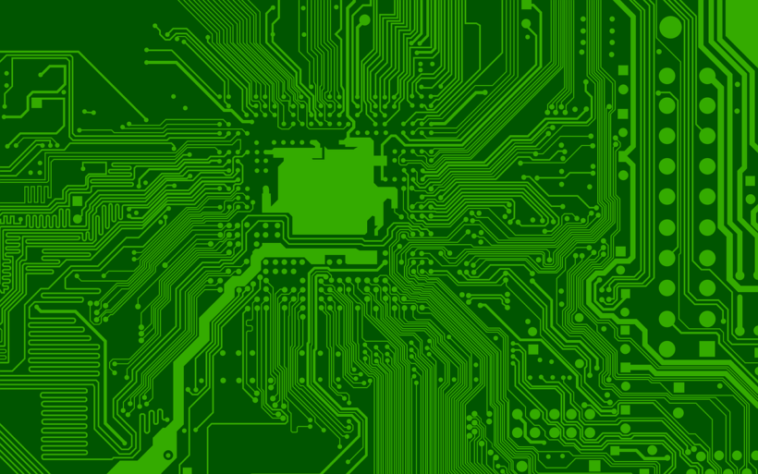- Like
- SHARE
- Digg
- Del
- Tumblr
- VKontakte
- Flattr
- Buffer
- Love This
- Save
- Odnoklassniki
- Meneame
- Blogger
- Amazon
- Yahoo Mail
- Gmail
- AOL
- Newsvine
- HackerNews
- Evernote
- MySpace
- Mail.ru
- Viadeo
- Line
- Comments
- Yummly
- SMS
- Viber
- Telegram
- JOIN
- Skype
- Facebook Messenger
- Kakao
- LiveJournal
- Yammer
- Edgar
- Fintel
- Mix
- Instapaper
- Copy Link
Introduction
Printed Circuit Boards (PCBs) are at the heart of almost all modern electronic devices, serving as the physical platform for interconnecting electronic components.
When designing PCBs for RF (Radio Frequency) and high-speed circuits, the challenges and considerations significantly differ from those for lower-frequency digital or analog circuits.
This article will explore the intricate PCB layout for RF and high-speed circuits.
RF Circuit Layout
RF circuits operate at frequencies typically above 1 MHz, reaching up to several GHz or beyond. These high frequencies introduce unique challenges in PCB layout:
- Impedance Matching: RF circuits use precise impedance matching to minimize signal reflections and maximize power transfer. This necessitates controlled impedance traces and components, which require meticulous attention to trace widths, dielectric constants, and stackup design. Differential signaling is often used to improve noise immunity.
- Grounding: Effective grounding is critical for RF circuits in PCB design. A ground plane provides a low-impedance return path for RF signals, reducing interference and signal loss. Careful placement of vias and components helps minimize ground loops and improve overall circuit performance.
- Isolation: High-frequency circuits must be isolated from one another to prevent crosstalk and interference. Proper spacing and shielding techniques are employed to achieve this. Shielding cans, ground planes, and guard traces protect sensitive RF components.
- Component Placement: RF components, such as antennas, filters, and amplifiers, must be strategically placed to optimize signal paths and minimize losses. Proper placement can significantly impact circuit performance.
- Transmission Lines: RF circuits often use microstrip or stripline transmission lines. These require precise trace dimensions and controlled impedance to maintain signal integrity. Calculations for line widths and dielectric constants are crucial.
- Crosstalk: Minimizing crosstalk between traces carrying RF signals is essential. Techniques like trace spacing, ground isolation, and guard traces help reduce unwanted electromagnetic coupling.
- Heat Dissipation: RF circuits can generate heat, especially in power amplifiers. Effective heat sinking and thermal management are necessary to prevent overheating and maintain circuit stability.
High-Speed Circuit Layout
High-speed digital and mixed-signal circuits, on the other hand, present their own set of challenges:
- Signal Integrity: High-speed circuits demand strict control over signal integrity. Impedance matching, controlled trace lengths, and minimizing reflections are paramount. Simultaneous switching noise (SSN) and ground bounce must be managed to prevent signal degradation.
- Power Distribution: Fast-switching digital components require stable and clean power delivery. Decoupling capacitors and proper power plane design are essential to minimize voltage drop and noise.
- Differential Pair Routing: Differential signaling is common in high-speed circuits. Routing and length matching for differential pairs are critical to maintaining signal balance and preventing common-mode noise.
- Clock Distribution: Clock signals are often a key component in high-speed circuits. Clock skew, jitter, and routing must be carefully managed to ensure synchronization and minimize signal distortion.
- Layer Stackup: Proper layer stackup design is crucial for high-speed PCBs. Controlled impedance, signal shielding, and power distribution should be considered when determining the number and arrangement of PCB layers.
- Signal Return Paths: High-speed signals require a clear, low-impedance return path. Split planes and stitching vias ensure the return path is as close to the signal trace as possible.
- Signal Crosstalk: Crosstalk can be a significant issue in high-speed circuits. Techniques like guard traces, spacing, and shielding help mitigate this problem.
- EMI/EMC Considerations: High-speed circuits can generate electromagnetic interference (EMI) and must be designed with electromagnetic compatibility (EMC) in mind. Proper grounding, shielding, and filtering techniques are employed.
The Takeaway
Designing PCB layouts for RF and high-speed circuits is a complex and specialized field. Success requires a deep understanding of the unique challenges posed by these circuits, along with expertise in controlled impedance, signal integrity, grounding, and EMI/EMC considerations.
Collaboration between PCB designers and engineers with expertise in RF and high-speed electronics is essential to ensure the optimal performance of these critical electronic systems.
Additionally, using advanced PCB design software and simulation tools can aid in accurately modeling and testing RF and high-speed circuits, helping to refine and optimize the layout for maximum performance and reliability.


